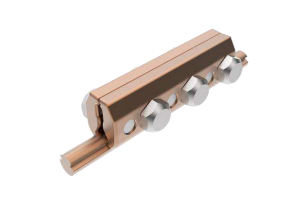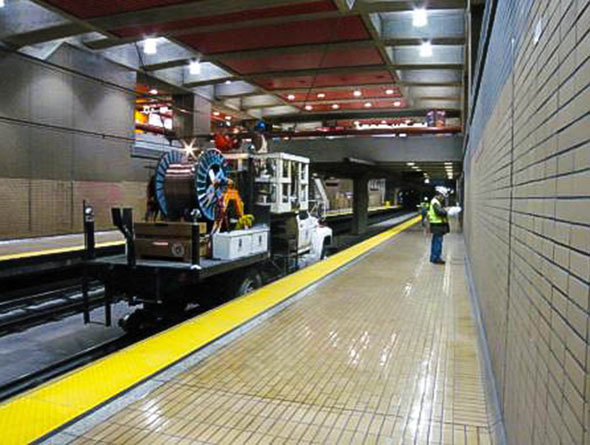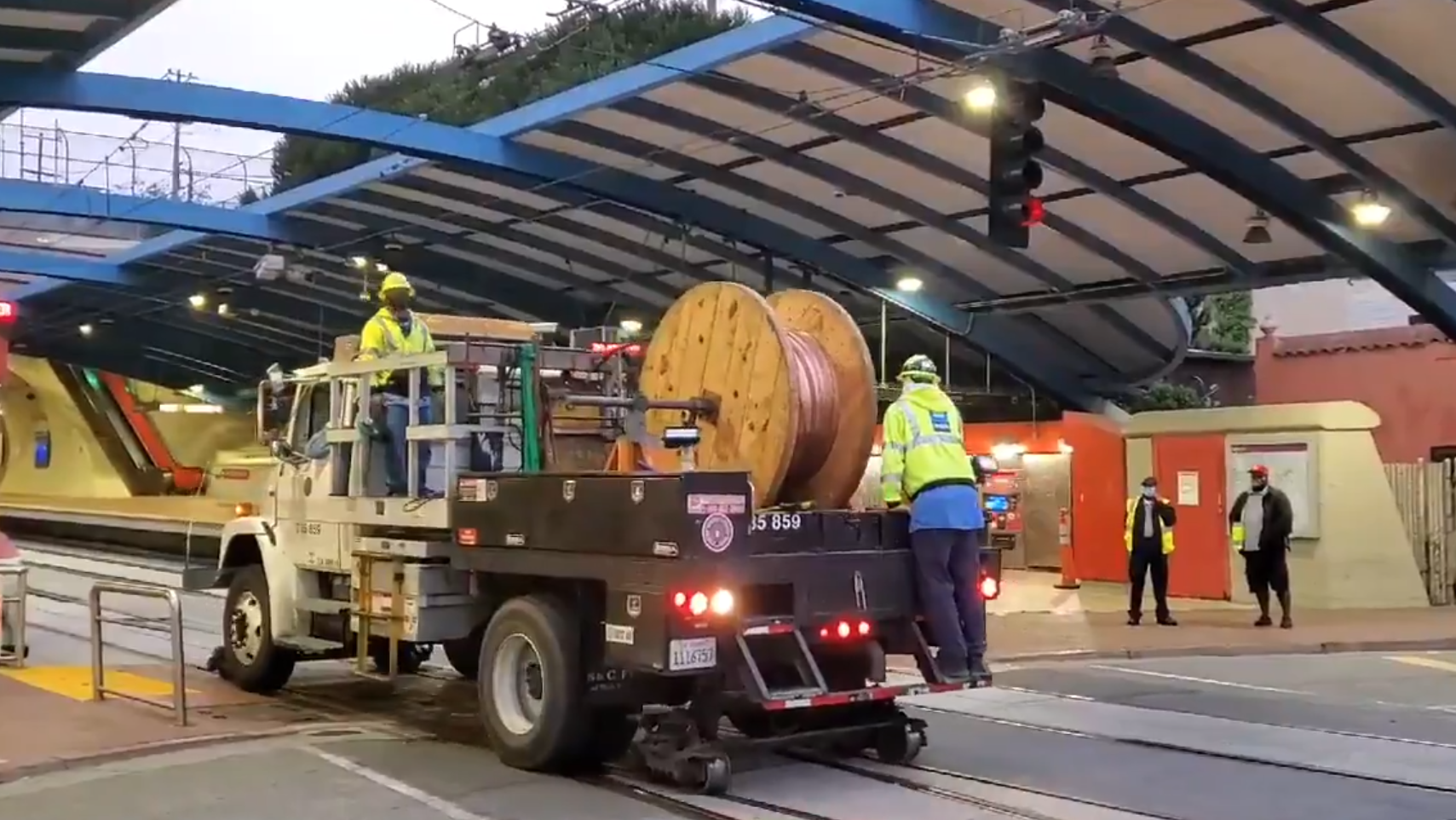Note: GJEL Accident Attorneys regularly sponsors coverage on Streetsblog San Francisco and Streetsblog California. Unless noted in the story, GJEL Accident Attorneys is not consulted for the content or editorial direction of the sponsored content.
The eagerly awaited return of Muni rail came to a screeching halt yesterday after overhead power systems failed and SFMTA management decided to shut the entire system. The explanation was that a COVID case in the operations center meant staff had to be quarantined, leaving them short handed. And the power system failure, blamed on broken overhead wire splices, would take time to repair. From an SFMTA tweet: "The short version is a combination of factors, primarily that overhead line splices in the subway were discovered to not meet the manufacturer's specifications."
Our first weekday of new Muni service will be rough. Overhead wire down at Forest Hill and buses substituted on J. We've got ambassadors at all transfer points to help direct passengers
— Jeffrey Tumlin 🏳️🌈 (@jeffreytumlin) August 24, 2020
That explanation begs questions, however. Splicing overhead catenary system (OCS) wire isn't exactly high-level engineering. It consists of metal plates and a bunch of bolts. But it's not unheard of for installations to be carried out incorrectly--partly as each manufacturer has slightly differing installation instructions--which can lead to failures, explained Ryan Scott, an engineer with the American consulting arm of Network Rail in the U.K.
SFMTA Director Jeffrey Tumlin, however, blamed the manufacturer. "Splices should be stronger than wire itself. Current splice material doesn't seem to meet spec.," he wrote on Twitter, and repeated during a Tuesday morning press conference.

He added that the snapped splice problem had happened at least once during test runs, but that it was blamed on over-tensioning of a pantograph--the arm on the top of the train that draws power from the overhead wire. But then it happened two more times and "...we realized the problem was not just the pantograph, it was the material the splice was made from."
ATTN: As of tomorrow, August 25th, all rail service will be provided by bus substitution. Additional details to come.#MuniMetro bus service:
— SFMTA (@SFMTA_Muni) August 25, 2020
- J Bus will run Balboa to Church/Market every ~12 min
- K Bus will run from Balboa to Embarcadero every ~15 min
However, Tumlin also said the results of metallurgical tests are not yet in hand, so, according to Scott, it's premature to blame the part. Scott, who has over 16 years experience with OCS, told Streetsblog there can be a host of possible installation issues. For example, in splicing two pieces of wire "...if they’re not the same size you have to file the other side down so it doesn’t catch on the pantograph, which can damage the pantograph or pull down the wire." It's also possible to tighten the bolts incorrectly or to replace a splice on the same spot where one was previously fitted, which can dig into the wire and weaken it.
The failures come some two years after the completion of a $9.7 million maintenance project in which Shimmick Construction replaced and updated the entire overhead power system during a stretch of Muni closures. A spokesman for Shimmick said the splices were not within the company's "scope of work in the MUNI Tunnel."

SFMTA used the COVID shutdown to do even more repairs. "They were so proud of all the maintenance work they were doing in the tunnel during the closure - how the heck did this happen? And do we trust them to get the splices all fixed and perfect in 'a few weeks?'" asked the San Francisco Transit Rider's Cat Carter. "And where was the testing before August 22?"
Tumlin said there's only one company in the U.S. that makes the splices and that new ones are now being shipped from Europe. "The wire was working fine, until starting full service with all trains on the tracks increased the tension," said Tumlin. So it was the full load of all the trains operating at once, in full service, that "...caused the splices to break."





